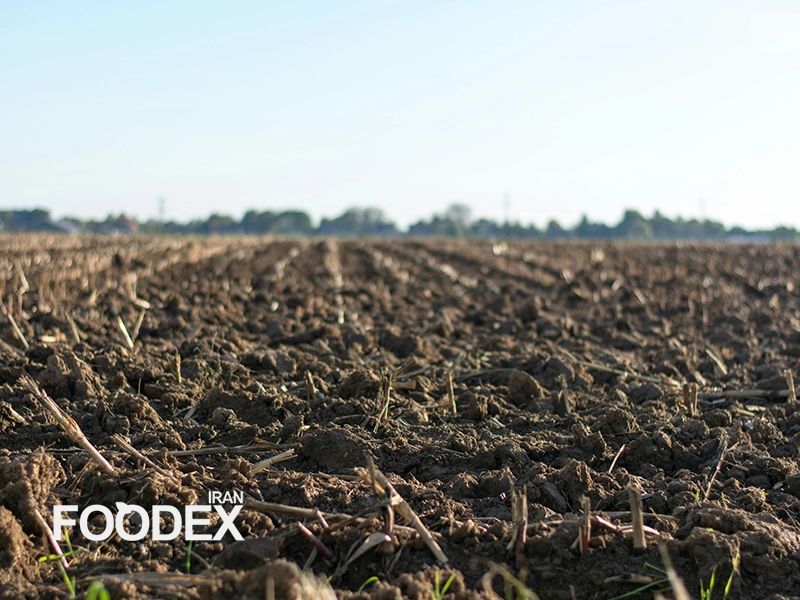Land use has been one of the essential factors in human-environment interaction related directly to general agricultural and livestock activities. About 50 percent of the habitable land in the world is used to produce food and other agricultural output at present. These levels of use are just necessary to meet food needs but have resulted in such environmental losses as deforestation, the loss of biodiversity, and more importantly, the acceleration of climate change. In this article, we have taken a closer look at land consumption and found solutions to optimize it. Continue with Foodex Food Industry Magazine for further information.
How Do We Use Land?
The arable lands of the world are divided into separate sectors, with agriculture being the major shareholder in this division. In this section, we look into this division and its impacts on natural resources.
The Share of Agricultural, Livestock, and Urban Lands Globally
Statistics show that nearly 50 percent of habitable land is used for food production. Of this amount, 77 percent is used for livestock, and only 23 percent is used for growing crops. Livestock requires more consumption than crop cultivation due to the need for pasture and fodder production.
The Difference in Land Use for Livestock and Plant-Based Products
Livestock requires more land than plant-based products. Significantly more land is consumed to produce one kilogram of beef compared to grains and legumes. For example, producing beef requires 28 square meters of land per kilogram, while grains require 1.5 square meters. This vast difference shows that high meat consumption is directly associated with excessive use of agricultural land and pastures, putting immense pressure on natural resources.
The Impact of Urbanization on Changing Agricultural Land Use
Due to the phenomenal growth in population and unparalleled urbanization, the potential use of land is markedly changing. Much agricultural area has already been used either for building urban cities and towns or for developing infrastructure areas. This requirement of cities is believed to grow more by up to 30 percent until 2050 and may ultimately lead to diminished agricultural resources, which could further intensify environmental challenges.
Africa’s Agricultural Potential: Turning Challenges into Opportunities
Learn MoreEnvironmental Impacts of Land Use
Land use, especially for agriculture and livestock, has deep environmental implications. In the next section, we will see how these changes affect forests, biodiversity, and climate change.
Deforestation and Its Hazards
One of the most significant consequences of the increase in agricultural and livestock land is deforestation. Since 2000, around 10 percent of the world’s forests have been cut down. This increases emissions levels while further reducing the natural carbon sink. High deforestation rates, as in the case of the Amazon, may become one of the major contributors to emissions growth globally.
Loss of Biodiversity
Loss of natural habitats due to the expansion of agriculture and pastures threatens animal and plant species with extinction. It is estimated that about 60% of the world’s animal species are found in forests. Many species have become extinct as their habitats have been cleared, with more at risk as habitat destruction continues. Protecting and conserving natural resources and forests are not only essential for ecological balance but also critical for human beings and the survival of these species.
Impacts on Climate Change
Deforestation and land use are significant contributors to rising carbon dioxide emissions. The burning and destruction of forests release millions of tons of carbon dioxide into the atmosphere annually. This accelerates global warming, leading to extreme phenomena such as droughts and floods, which seriously threaten ecosystems and human life.
The Impact of Diet on Land Use
Human diets play a significant role in the extent of land and natural resource use. Food choices can have considerable impacts on agriculture and livestock.
The Difference in Land Consumption for Meat and Plant-Based Products
Meat production, especially beef, requires more land than plant-based products. Producing one kilogram of beef requires 28 square meters of land, while the production of grains and vegetables requires much less land. As a result, meat consumption puts more pressure on land resources compared to plant-based products and has a large share in deforestation and environmental degradation.
The Role of Plant-Based Diets in Reducing Land Consumption
Besides being conducive to human health, plant-based diets have less environmental degradation. A recent study has shown that changes in diets toward plant-based consumption can reduce the use of agricultural land by as much as 80 percent. The reduction in land use would imply a reduced demand for new agricultural land and thus a reduction in deforestation.
Global Impacts of Meat Consumption
At the global level, meat consumption has increased greatly, especially in developed countries. Increased demand for meat has led to increased production and, hence, the requirement for more land for pastures and the production of fodder. Countries like the United States and Brazil are among the world’s largest meat producers, with much of the Amazon deforested for livestock land.
Historical Trends in Land Use
Land use has changed markedly over recent decades. It is with the industrialization of agriculture and rapid urbanization that the demand for new lands for food production and housing increases. The chapter goes on to consider the land-use change process historically and the implications from these changes.
The Role of Women in African Agriculture
Learn MoreChanges in Land Use Over the Past Decades
Since the onset of the Industrial Revolution, agriculture is viewed to be one of the predominant means leading to changing land use. Because of continued interest and increase in yields with improved technologies in farming, much forested area has been turned into farmland and pasture. This has consequently led to the decline of forests and natural areas over the years.
Increased Urbanization and its Impact on Agricultural Land
One of the significant factors contributing to the change in the use of agricultural land is urbanization. Many productive agricultural lands have been used as residential and industrial areas. Estimates show that over the coming decades, land demand will be very high, possibly resulting in the loss of agricultural land and further environmental degradation.
Industrialization of Agriculture and Increased Land Use
Over the past few decades, industrial agriculture has been one of the most significant drivers of land use change. This is because of the new technology and increased production of both livestock and crops, since these have created a great need to have more and more land for agriculture as well as livestock, creating further destruction of forests, hence depleting their natural resources.
Challenges and Opportunities Ahead
The following are some of the most important challenges and opportunities ahead that we are going to look at:
Population Growth and Increasing Demand for Agricultural Land
The world population has continued to grow and is likely to reach about 9.7 billion by 2050. With rapid growth in population comes increased demand for food and, as a result, a need for more agricultural land. Currently, with the highly utilized agricultural land, there is less and less space left for expansion, and carrying on like that without proper management brings in its trail the absolute destruction of natural productive resources.
Challenges of Preserving Forests and Preventing Agricultural Expansion into Forested Areas
Forests, like all other major sources of biodiversity and carbon sinks, serve a number of highly crucial functions regarding the protection of the environment. This is because, with an increased demand for agricultural land, much of the forests, especially in tropical parts like the Amazon, have been cleared and converted into agricultural land. One of the major challenges of sustainable land management is preventing this expansion and preserving the forests, which requires serious policy-making against deforestation.
Opportunities for Agricultural Productivity and Reducing the Need for New Land
One of the best opportunities to reduce pressure on new land is to improve agricultural productivity. The use of new agricultural technologies such as precision agriculture, smart irrigation systems, and seed improvement can increase agricultural production without the need for land expansion. These innovations can help preserve natural resources and reduce additional demand for new land.
Solutions for Optimizing Land Use
Optimal land management is one of the fundamental steps in addressing environmental challenges. These measures can not only help reduce the destruction of natural resources but also increase agricultural productivity and the use of existing resources. In the following, we will examine practical solutions for reducing pressure on agricultural land and natural resources.
Increasing Agricultural Productivity through New Technologies
New technology might prove to be a milestone that would increase farming productivity many folds. These include the use of precision agriculture, smart sensors, and satellite data, resulting in the development of advanced technologies for monitoring and managing crops. Thus, better production could be expected with minimal wastage. In due course, with the advent of better technology, agricultural products can meet needs without the need for extra farmland, as current lands would suffice.
Changing Diets, Key Factor in Land Use Reduction
Another important trend in reducing land use is changing food consumption habits and patterns. Meat production, especially beef, requires considerable areas of land. Shifting toward plant-based diets and reducing meat consumption decreases direct pressure on agricultural lands. According to researchers, lowering meat consumption could reduce agricultural land use by up to 80 percent.
Protection of Forests and Natural Resources
Protecting forests and natural resources is a priority. Conservation policies, such as REDD+ (Reducing Emissions from Deforestation and Forest Degradation), and investment in natural resource conservation projects are critical. These efforts need to be seriously undertaken and implemented by countries globally, along with international organizations, to prevent further damage to nature.
Sustainability in Agriculture
Learn MoreA Step Towards Sustainable Land Management
Sustainable land use is one of the great challenges of the present era, requiring proper resource management, enhanced agricultural productivity, and altered food consumption patterns. Without proper management, the growing population and rising food demands may lead to further devastation of forests and natural resources. Dietary changes, along with new technologies and solutions based on environmental conservation, can relieve the pressure on land, creating a balance between human needs and environmental preservation. International cooperation and conservation policies also play an important role in addressing existing challenges and moving toward sustainable land management.
Sogand Safari
Head of Content at Foodex Iran


























